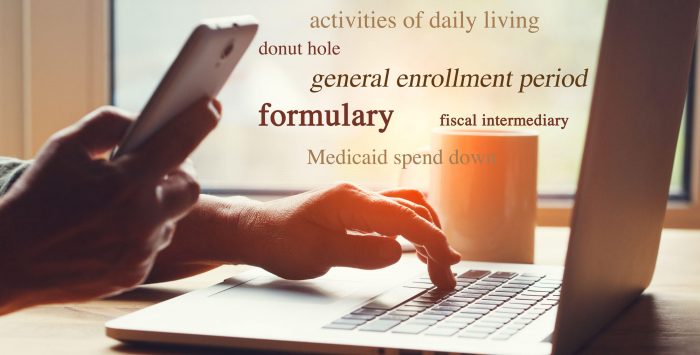Please provide your zip code to see plans in your area.
Since 2011, we've helped more than 5 million visitors understand Medicare coverage.
Find Medicare plans that fit your needs.*
Enroll in a plan today.
* By shopping with our third-party insurance agency partners. You may be in contact with a licensed insurance agent from an independent agency that is not connected with or endorsed by the federal Medicare program.
We do not offer every plan available in your area. Any information we provide is limited to those plans we do offer in your area. Please contact Medicare.gov or 1–800– MEDICARE to get information on all of your options.

A formulary is the list of approved prescription drugs that a Medicare Part D plan will cover. Each Part D plan — including stand-alone plans (PDPs) and Medicare Advantage plans with integrated Part D coverage (MA-PDs) — has its own formulary, so covered drug lists vary from one plan to another. As described below, Part D plans generally place covered drugs in different tiers on the formulary, depending on their cost. Plans can also have prior authorization requirements and/or step therapy requirements before they’ll cover certain drugs on their formularies.
Each Part D plan generally has to include at least two drugs from each drug category on their formulary. But the plans have flexibility to decide which drugs in each category will be on the formulary. And the specific drugs included on a plan’s formulary can change from one year to the next.
Part D plans generally divide their formulary up into tiers, with the lowest-cost drugs in the lowest tier and the highest cost drugs in the highest tier. The number of tiers will vary by plan, but there are commonly four or five. In general, the higher tier your drug is in, the more you’ll pay when you fill a prescription. Since Part D plans design their own formularies, you may find that a certain drug is in a lower tier with one plan and a higher tier with another plan.
If your doctor prescribes a drug that isn’t on your plan’s formulary or that’s in a high (expensive) tier, you should discuss this with your doctor. It’s possible that a different drug could be substituted and would result in lower out-of-pocket costs at the pharmacy. But if your doctor believes there are no substitutes that would work for you, it’s possible to request a formulary or tier exception. The Part D plan may or may not honor the exception request, but they will consider it.
If the exception request is denied, keep in mind that you have an opportunity to switch to a different Part D plan at least once per year, and possibly more often than that. The annual open enrollment period (October 15 to December 7) applies to everyone with any type of Part D coverage. There’s also a Medicare Advantage Open Enrollment Period (January 1 to March 31) that allows people with Medicare Advantage to make a plan change. And beneficiaries who qualify for Medicare’s Extra Help (income and asset-based eligibility) can make a change to their Part D coverage as often as once per quarter.